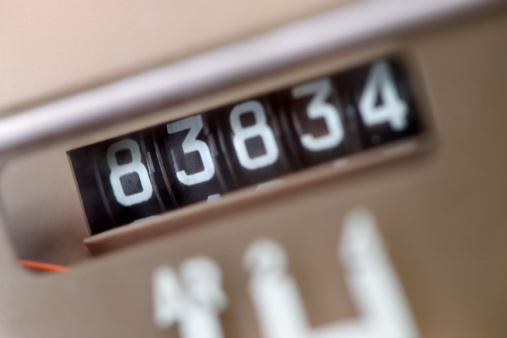Wow! A ten-year-old Honda Civic with a mere 30,000 miles on it. It’s exactly what you’ve been looking for–a low mileage car within your budget. It sounds like a dream come true. Let’s just hope that “dream” doesn’t turn out to be a nightmare.
The truth is that there are unsavory characters out there who know how to disguise a tired old jalopy as a spunky young cream puff by altering the odometer count.
How, then, can a not-so-mechanically-inclined car-shopper like you avoid falling victim to odometer fraud? Thankfully, there are ways to outsmart even the cleverest con.
Digital Does Not Equal “Tamper Proof”
Ignorance rarely equates to bliss, no matter what they tell you. Many people are mistakenly under the impression that new digital odometers cannot be tampered with when, in fact, they are quite easily altered. As “Odometer Fraud is More Common than You May Think” warns, by using the right software, a criminal can easily roll back the odometer and substantially increase a car’s value–and price tag.
Check the Paper Trail
A great way to find out if that decade-old Honda has been around a few more blocks than advertised is to do a little digging into its documented history.
- CARFAX. A CARFAX Vehicle History Report will provide you with authentic mileage information.
- Repair Records. Request maintenance receipts and check for discrepancies in the mileage readings. Look for inspection stickers on the inside frame of the door. Also, see if the previous owner has recorded the vehicles maintenance in the owner’s manual.
- Length of Ownership. Avoid any vehicle that has had multiple owners over a short period of time. This could be an indication of mechanical problems.
How Worn are Its Parts?
A Honda with only 30,000 miles on it shouldn’t resemble one that has 130,000 miles of wear. Autotrader recommends inspecting the car’s interior for tell-tale signs like a worn-smooth brake-pedal pad, holes worn in the carpet at the heel area of the gas pedal, and shocks and springs that have been replaced.
Taking the vehicle to your trusted mechanic is a must. They are in a much better position to spot drivability issues and replaced parts that would indicate that your “too good to be true” Honda is exactly that.
Look for Odometer Oddities
If that little Honda has a wonky-looking odometer, you definitely have a problem. If it has an analog odometer, take a good look make sure the numbers are aligned properly and that the gaps between the numbers are consistent.
Digital odometers can show signs of deception too. Some manufacturers, for instance, have programmed theirs to display an asterisk or and “E” if the mileage has been tampered with.
Double-Check the Dash
If the dashboard has unusual damage, walk away from the Honda. Missing screws, scratches in the odometer area, and scuff marks around the gauges are indicators that the mileage may have been altered.
If you–like many fans of Ferris Bueller’s Day Off–thought that rolling back on odometer involved driving backwards, you are likely surprised to learn just how easy it is to commit this common fraud. Armed with empowering knowledge, you are now equipped to determine if that Honda is, indeed, a fresh cream puff or a stale lemon.
Have you been duped by an odometer fraud?



